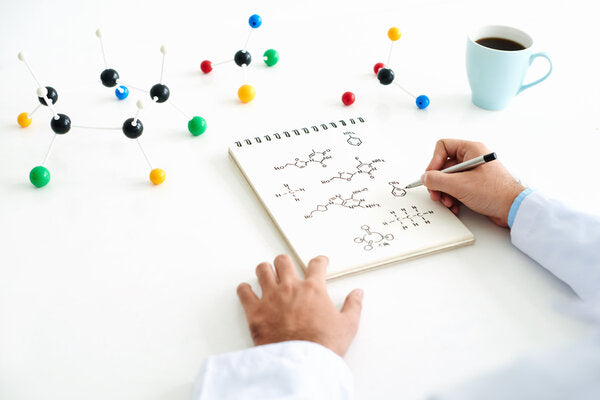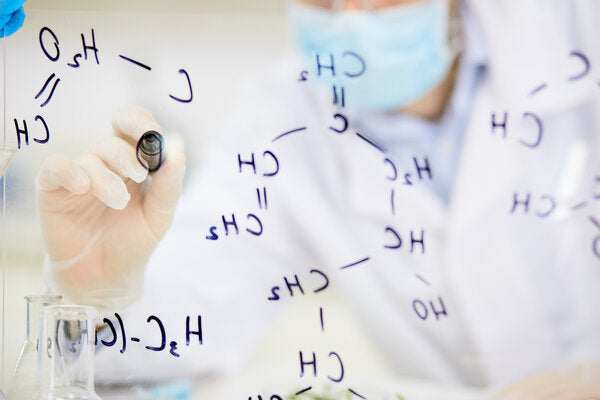
What are scientists doing in their laboratories?
[Haz clic aquí para leer la versión en español]
First of all, we should know what a scientist is, and why they need a laboratory. Well, scientists solve questions about how our world works. Their most important goal is to provide findings that help us understand something new enabling us to obtain new technology, medical treatments or take care of the environment.
Scientists work every day on any topic you can imagine, from subatomic particles to galaxies. The first requirement to be a good scientist is to be curious and question everything. For example, you may wonder: why is the sky blue? How do car engines work? Why is it cold or warm? How is a scar formed? How does that headache pill work?

As you can see, there are so many questions, and it is difficult to know the answer to all of them. Books have always been our best friends, but now the Internet is a huge library of information, so much that we could not cover it in our entire lives, and new information is being generated almost every minute.
Once they identify the question we want to solve, scientists in the laboratory must read a lot about that topic and investigate if someone else in the world has come up with the same idea. Science is so vast, that although there are several people researching the same phenomenon, it is very likely that each scientist is doing it differently, using different methods or protocols.

Methods are the way that we as scientists plan to solve questions. Suppose you are interested in knowing if all apples are red, clearly, the question is: are all apples red? Forget that you know the answer and imagine that you are a scientist trying to solve that question. How would you solve it? Well, you cannot investigate all the apples in the whole world, because it would take your entire lifetime. So first, you must look for information, but not just anywhere, you must be sure that what you read has been written by other scientists. Continuing withour imaginary exercise, suppose there is an article that says that all apples are red, we will call the author of that article Dr. M, but we found another article that Dr. S published that says that red and green apples have been found. You are now facing a state of doubt because of the contradictory information, so it is your turn to determine how to resolve that contradiction.

To answer the question, are all apples red? We would need a “sample” of apples, because we already said that we cannot investigate all apples, so we decide that we must go to at least 5 markets and buy 5 apples in different stores. That sample will be representative of our whole neighborhood. Arriving at the laboratory, we will arrange the apples, and we will write down the characteristics of each one in a special notebook called “blog”, which must have the date and all the details of our findings, even the smallest. We will write in the blog: "apple 3 of market 4is red, but we see that it is smaller than all the others". For the moment, the size of the apple may not seem to be important, but we are curious scientists and we have generated a new question: are all apples the same size?
Continuing with our data, once we have finished the data collection, we must do the mathematical analysis. How many are red? How many are yellow? How many are green? We then write our results as follows: "Our analysis indicate that from the sample of t 25 apples, 15 are red, 5 are yellow and 5, green."
To discuss the data we must remember what Dr. M and Dr. S. previously described. Then we can write “Our results are similar to those obtained by Dr. S, who found red and green apples; we also found yellow apples, so the data from Dr. M, where he says that all apples are red, does not seem to be correct”.
Finally, we must make a conclusion about these data, for example “We have determined that not all apples are red, there are different colors, which indicates that apples have a greater variability than what we previously believed; the size and the taste are probably also different, but more studies are needed to solve those questions”.
And so, we have performed a scientific investigation, arousing the curiosity of other scientists who may be studying similar questions, like: how many apples are there per tree? Can you match the color of the apples with another feature? Is the color of the apple related to its delicious taste?
Thus, daily, a scientist tries to solve questions that, certainly, take much longer than the "apple project". Imagine all the research that must be done to answer questions like: what is the origin of life on earth? How can we cure cancer? How do our cells work? The human genome project, for example described each one of the approximately 30,000 genes in our 23 chromosomes and took 15 years to be completed. This project required the participation of many laboratories in different parts of the world, it took a full page to write down the names of all the authors. This exhaustive investigation has helped others to ask many questions that may save lives.











































0 Comments